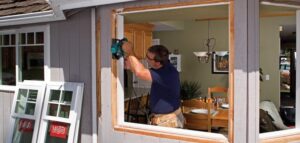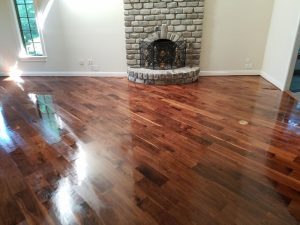Residential plumbing deals with the pipes that supply water and drain waste within a home. These systems tend to be less complicated than commercial ones.

Understanding how these components work together can help homeowners maintain their plumbing properly. From toilets to sinks and bathtubs, learn about the parts that make up a residential plumbing system. To learn more, visit https://freedomplumbingnj.com/.
The pipes that bring water into your home, connect to appliances and distribute it throughout the building are known as supply pipes. They must withstand high amounts of pressure and temperatures that fluctuate throughout the year, so there is a wide range of plumbing pipe materials in use today. These pipes are available in a variety of shapes, sizes and finishes to meet the needs of every application.
The most common residential supply pipes are made from copper. You will also see PVC, acrylonitrile butadiene styrene (ABS), cross-linked polyethylene (PEX) and chlorinated polyvinyl chloride (CPVC) in many homes today. Each of these types has its own unique set of benefits but they all work to provide a durable, affordable and reliable solution for household water supply and transporting potable water.
For example, copper pipes are highly durable and able to hold a great deal of pressure. However, they are prone to corrosion and can be more expensive than other options. For this reason, you will find CPVC is often used in place of copper pipes for new construction and replacement projects.
Galvanized steel is another commonly used pipe material but it corrodes over time, so it’s no longer the standard in new homes. You will still find galvanized pipes in older homes and, if they need to be replaced, it’s generally done by replacing them with copper or PEX.
One of the most significant advancements in pipe manufacturing is the introduction of PEX in recent years. This flexible plastic is perfect for use in a home’s plumbing systems because it allows the pipe to bend and twist without affecting its structural integrity. This helps to reduce the amount of stress that can be put on the joints and prevents the formation of leaky seams. PEX is lightweight and much easier to work with than traditional copper or galvanized pipes, which makes it a popular choice for modern plumbing systems. The flexibility of PEX also helps to keep the noise level low by reducing pipe rattling. In addition to being cost effective and easy to install, PEX is a safe and environmentally friendly option.
Distribution Pipes
Whether you’re troubleshooting, repairing or upgrading your home plumbing system, or planning for new construction, there are many piping options. Several types of pipes are used to carry water supply, waste and gas lines through your home. The right pipe material will help ensure the efficiency, durability and longevity of your home’s plumbing.
The pipe that brings water into your house is known as the supply pipe. It can be made of copper, galvanized steel or PVC. The latter is most commonly used because it’s affordable, has a wide range of fittings and fits the majority of domestic hot and cold water applications. In addition, PVC is impervious to most chemicals and has a lower risk of freezing damage compared to other pipe materials.
In recent years, cross-linked polyethylene (PEX) has gained popularity among professionals and DIYers because of its ease of installation, low cost and flexibility. PEX can bend around corners and through walls, eliminating the need for rigid metal pipe and fittings that may cause leaks. In addition to its use for hot and cold water, PEX is used to cycle reclaimed water throughout the home and to heat rooms like bathrooms using hydronic piping.
Another type of piping is cast iron or galvanized steel, which is often used for the main drain line that runs from toilets and other fixtures to your home’s sewer system or septic tank. These are the largest pipes in your home, ranging from 4 to 6 inches in diameter and typically black or rust-colored. These pipes are durable and have a long average lifespan, which minimizes how frequently you’ll need to replace them.
You’ll also find ABS (acrylonitrile butadiene styrene) pipes in your residential plumbing, which are used for waste and vent lines. You’ll most commonly see these behind sinks, delivering greywater or blackwater to the main drain line and/or your septic tank. Unlike copper, which can corrode over time, ABS has a relatively low chance of contaminating drinking water. You can purchase ABS in a variety of sizes, with the most common being 1 1/2 inches in diameter.
Drain Pipes
When it comes to the behind-the-wall plumbing in your home, there are several pipes that are crucial for water supply and waste removal. There is a wide range of piping types and materials, all with their own strengths, weaknesses, typical lifespan and installation requirements. Knowing more about the drain, waste and vent pipes that are used in residential homes can help homeowners choose the best piping materials for their project or repair needs.
The drain pipe system in a home is important because it ensures that all wastewater, including used bathwater and sewage, is properly removed from the house. This process is not only necessary for human health and safety, but it also protects the structural integrity of your home’s foundation. If the drain line becomes clogged with waste and other debris, it can cause significant problems in the household. These problems include the buildup of toxic bacteria, unpleasant odors and flooding.
Drain lines are generally made of metal or plastic, depending on the application and installation requirements. PVC piping is the most common choice for fixture drain lines because it’s durable, affordable and resistant to corrosion from chemicals. It’s easy to find in home supply stores and can be easily joined with a variety of fittings. Another type of drainage pipe that’s commonly used in homes is acrylonitrile butadiene styrene (ABS). This flexible plastic is durable enough for use underground, and it’s easy to work with when connecting fixtures.
Most people don’t think about their home’s drain lines until something goes wrong with them. However, it’s important to keep the drain line in good condition so that clogs and other issues don’t occur. Luckily, professional plumbers are available to perform maintenance, repairs or replacements when needed.
Clogged drains are one of the most common residential plumbing problems. They can affect the flow of water in and out of a home, and they can lead to mold growth, leaks and expensive water damage. To prevent these issues, it’s a good idea to maintain the drain lines in your home by performing regular cleaning and inspections.
Vent Pipes
Plumbing vent pipes are an important part of your drain system. They help to balance air pressure inside of your drain pipes, allowing wastewater and sewer gases to flow freely to the city sewer or septic tank. Vent pipes also allow fresh air to enter your drainage system, reducing the amount of time it takes for waste and water to break down.
While it might not be something homeowners often think about, it is essential to have proper plumbing ventilation systems in place. Without them, your drain pipes may develop negative or positive pressure, siphoning water from p-traps and causing sewage to back up into fixtures and the home.
The best way to keep your plumbing vent pipes healthy is by being proactive with their maintenance. This includes keeping them clean and free of obstructions, which can include things like birds’ nests, leaves, and ice in winter. It’s also a good idea to have them inspected on a regular basis, especially after severe weather or major changes in your household’s usage patterns.
Depending on your area, you might have specific rules about how high your vent pipes need to be above your roof or how they should be connected to your drainage system. These regulations are put in place to keep your household safe, protect the environment, and ensure that your drain pipes function properly.
There are several different options for plumbing vent pipes, with each one serving a slightly different purpose. The most common is a true vent pipe, which is attached to the drain line and exits through your roof. Other options include re-vent pipes, which are installed near individual plumbing fixtures and connect to the main vent pipe, and vent stacks, which combine two or more vent pipes into a single chimney-like structure.
The biggest issue with vents is that they can become clogged, which will reduce their efficiency and cause issues with your drains. Gurgling noises coming from your drains are an indication of this issue, as are foul odors that appear when water is draining. These problems indicate that your vent pipes aren’t letting enough air in and should be cleaned or repaired as soon as possible. Using a plumbing snake or flushing them with water can help dislodge and remove any blockages in your vents.


